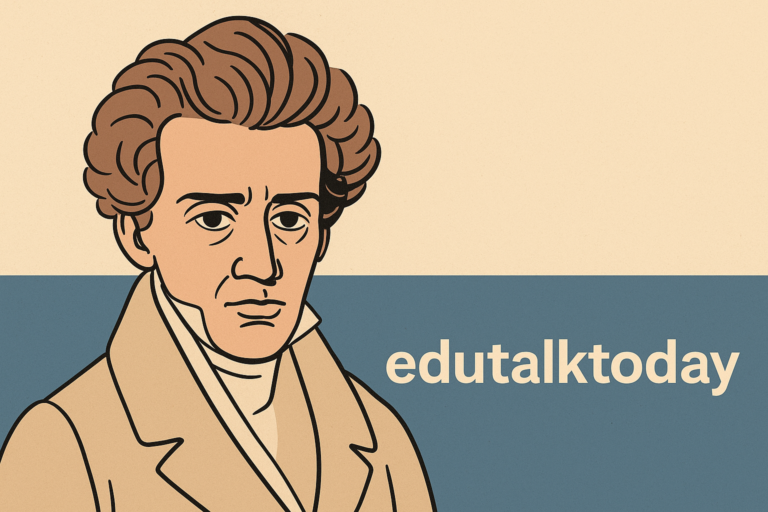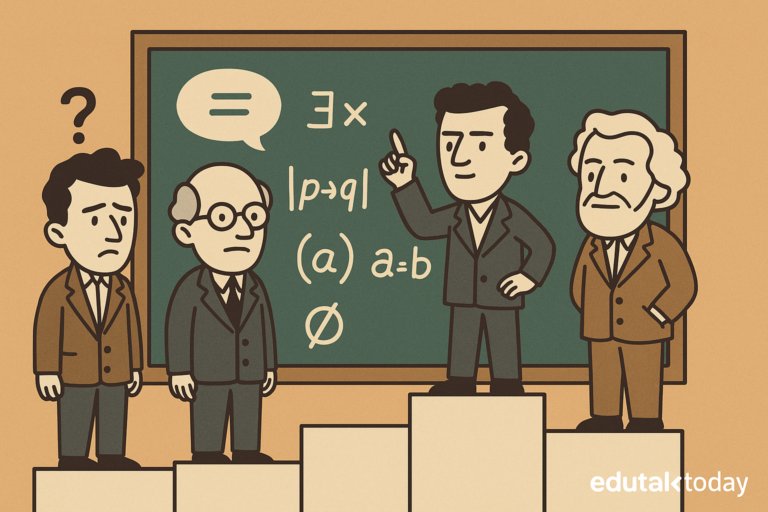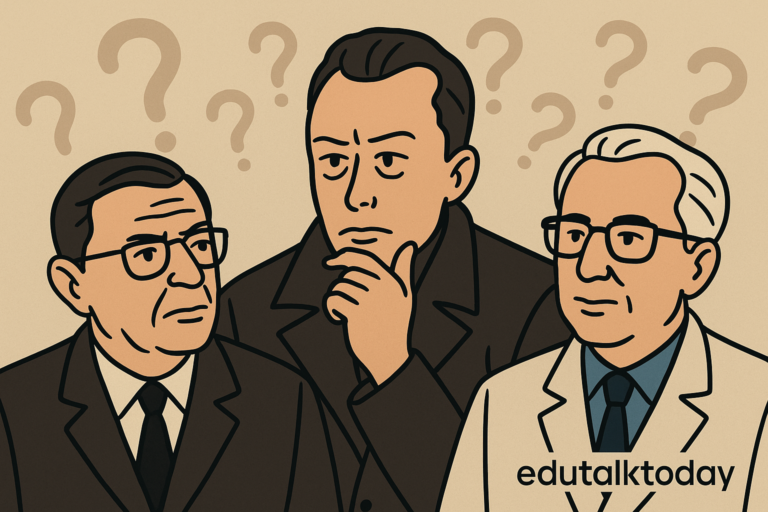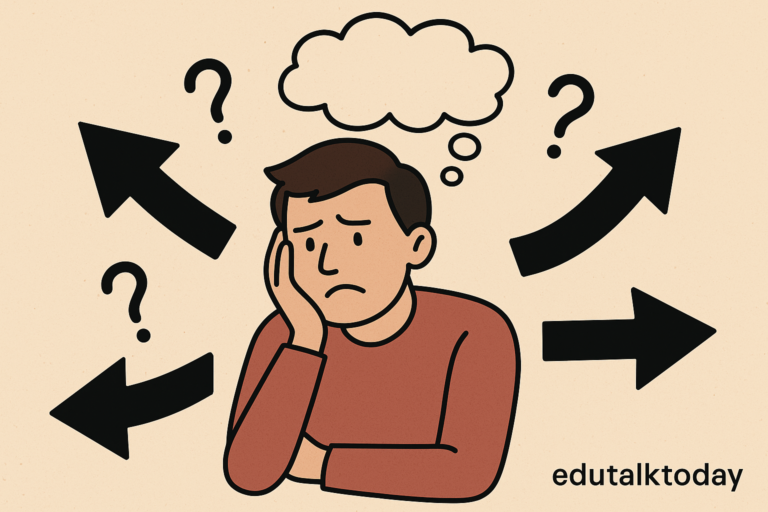The Pragmatic Maxim – How Meaning Comes from Consequences
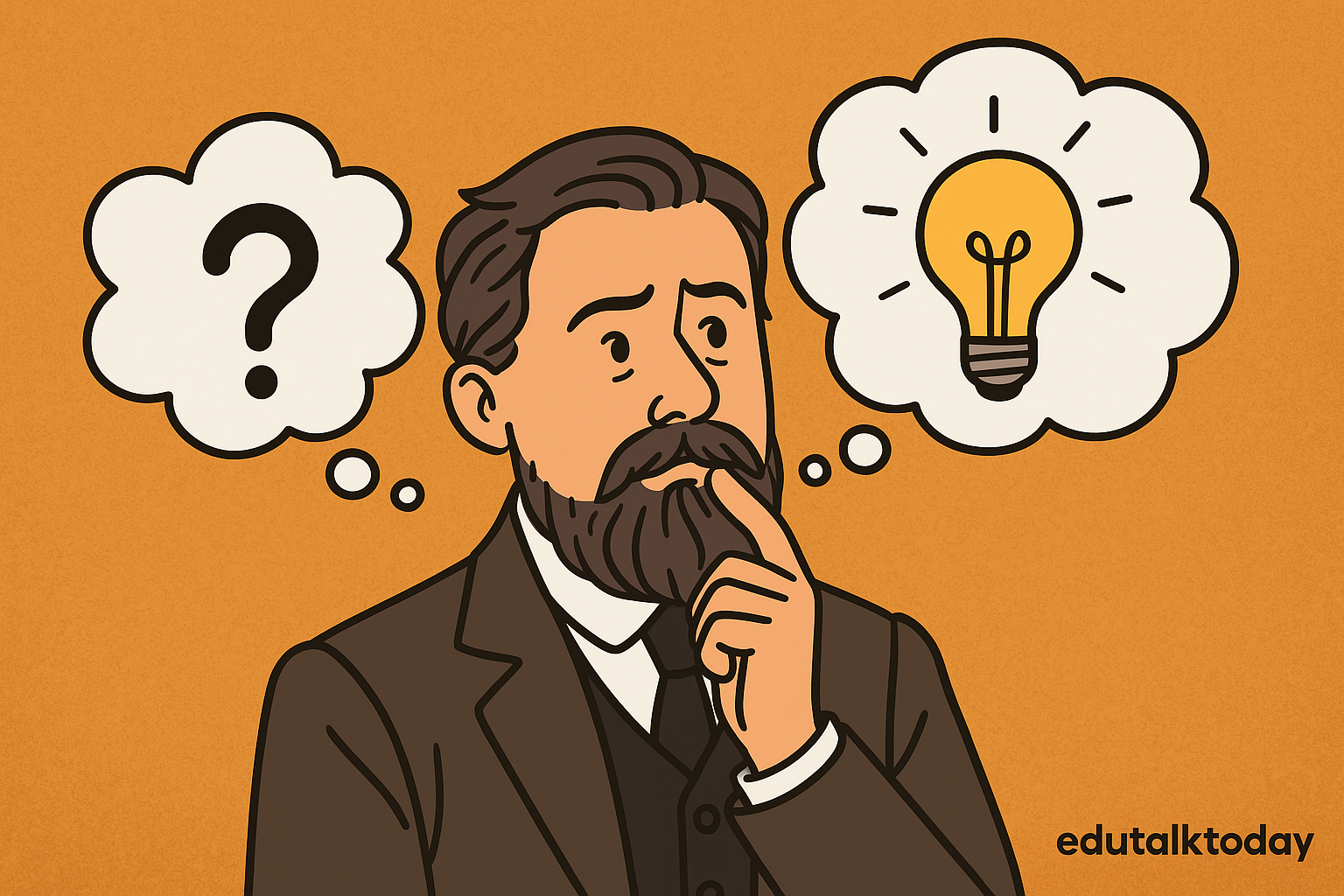
We’ve all heard it before: “To understand what a concept means, look at its practical consequences.”
Peirce’s Pragmatic Maxim, in its most quoted form, sounds almost too intuitive.
So intuitive, in fact, that I think a lot of us stop there. We file it under “pragmatism 101,” maybe bring it up when contrasting Peirce with James, and move on.
But here’s the thing: most interpretations of the Maxim are too flat. They miss how Peirce meant it as a logical filter for meaning—not just a tool for making our ideas clearer, but for determining which ideas are meaningful at all. And over time, his own understanding of it evolved far beyond its original 1878 formulation.
What I want to do in this post is dive into the Maxim as a criterion for intelligibility, unpack how it works logically, and show you why that old phrase about “practical effects” actually hides a much deeper structure.
The Real Logic Behind Peirce’s Maxim
Let’s go back to 1878. In “How to Make Our Ideas Clear,” Peirce writes:
“Consider what effects, that might conceivably have practical bearings, we conceive the object of our conception to have. Then, our conception of these effects is the whole of our conception of the object.”
At first glance, this sounds pretty straightforward—meaning is just the sum of the actions we’d take in response to a concept. But if we leave it there, we’re underestimating what Peirce was actually building: a bridge between logic and metaphysics, using a theory of meaning rooted in conditional behavior.
Let me explain.
Not About Utility—About Hypotheticals
When Peirce says “practical effects,” he doesn’t mean “useful outcomes” in the everyday sense. He means conceivable habits of action—what would follow if certain conditions were true.
Take the example of “hardness.” We don’t define hardness by some internal essence or direct sensation. Instead, we understand it in terms of what a hard thing would do under certain conditions—resist scratching, deform other substances, remain unchanged under pressure. These are not random actions; they’re conditioned behavioral responses.
And crucially, they don’t need to happen in reality. Peirce’s point is that a concept is meaningful only if it implies a general law of behavior, even if that law is never actually instantiated.
If there are no imaginable effects, then there’s no content to the concept.
That’s a radical move. It means that even metaphysical terms like “force,” “cause,” or “possibility” must be testable in thought, through conceivable effects—not just observable phenomena.
The Logical Structure – Conditionals All the Way Down
Here’s where things get more interesting. The Maxim isn’t just a rule of thumb—it embeds a logical structure. Think of it like this:
If concept X were true, then under conditions Y, effect Z would occur.
That’s a conditional. Peirce is effectively saying that every intelligible concept implies a system of conditionals. These conditionals express the habits we could expect if certain premises held. That’s why the Maxim isn’t about predictions—it’s about hypothetical coherence.
This move anchors meaning in generalized, conditional habits, not in raw data or use-cases. That’s a very different orientation from James or Dewey, who often focused more on consequences in action. Peirce, being Peirce, was always pulling it back to logic.
Meaning ≠ Truth, But They’re Related
Here’s a key point that’s easy to miss: the Pragmatic Maxim doesn’t help you decide whether something is true, only whether it’s intelligible. This is often misunderstood.
Let’s say someone talks about “absolute negation” or “pure being” in some abstract metaphysical argument. Peirce would ask: What would follow from that being true? What habits of behavior or conditions could we expect? If the answer is “nothing coherent,” then the phrase is empty—it’s meaningless in a strict logical sense, not just vague.
So the Maxim becomes a filter for metaphysical junk, a way of trimming language down to what can be made sense of in terms of potential effects.
It’s Also About Semiotics (But More on That Later)
One last teaser before we move on: Peirce didn’t just stop with logic. Over time, he embedded the Maxim into his broader semiotic theory, where the meaning of a sign is the habit it produces in an interpreter. But to really get how that works, we’ll need to talk about misreadings first—because there are a lot of them.
Next, we’ll look at five common ways people (even experts!) get the Maxim wrong—and why it matters more than you might think.
Five Common Misreadings of the Pragmatic Maxim — and Why They Miss the Mark
Even among people who know Peirce inside and out, I’ve found that the Pragmatic Maxim often gets misread, oversimplified, or subtly twisted. Some of these misreadings are understandable—it is Peirce, after all—but others flatten what is arguably one of the most precise tools for carving meaningful concepts out of philosophical fog.
So let’s break down five common misreadings I’ve seen crop up—even in scholarly work—and dig into what they miss.
1. Thinking “Practical Effects” Means Usefulness or Utility
This is by far the most common trap, and honestly, it makes sense. “Practical” sounds like “useful,” so it’s easy to assume Peirce is talking about utility, in the Jamesian or Deweyan sense.
But that’s not what he meant.
For Peirce, “practical” refers to conceivable habits of action that would follow if a proposition were true—not how useful those actions are in achieving our goals. You could think of this as a form of behavioral conditionality. Whether or not those habits are useful is irrelevant.
Let’s take the concept of “mass.” We don’t understand mass in terms of its benefit, but in terms of what would happen if you applied force to an object (acceleration, resistance, inertia, etc.). That’s the kind of “effect” Peirce had in mind—logical consequences in a thought experiment, not actual outcomes in the world.
2. Treating the Maxim as a Psychological Heuristic
This one is subtler. Some thinkers treat the Maxim like a kind of mental shortcut—a way to clarify concepts in your head, or to make abstract notions more concrete.
That’s not wrong, exactly, but it’s not the point.
Peirce didn’t care about whether a concept felt clearer. He was after something more objective: a rule for determining whether a predicate has any intelligible content at all. If no habits of conduct follow from the assertion of a proposition, then it’s meaningless—not just vague, but empty.
In other words, the Maxim isn’t a trick for thinking better—it’s a test for meaning.
3. Confusing Peirce’s Maxim with Jamesian Pragmatism
Peirce famously parted ways with William James over the interpretation of the Maxim, and for good reason.
James emphasized the value of beliefs based on their practical consequences—what they do for the believer. That opens the door to beliefs being “true” if they’re useful or satisfying. But Peirce wasn’t interested in that kind of subjective justification.
He wanted to know: Can we say what this concept means, without reference to its actual truth? That’s why he rebranded his view as “pragmaticism”—“a deliberately ugly word,” as he put it, to prevent kidnappers from stealing it again.
4. Assuming the Maxim Is Static and Settled
Many people quote the 1878 version of the Maxim like it was Peirce’s final word on the matter. But if you track his writings from the 1900s onward, the Maxim evolves—radically.
By 1905, Peirce begins to reframe the Maxim as part of a broader triadic logic, tied into his categories of Firstness, Secondness, and Thirdness. He starts to see meaning as not just a result of conceivable consequences, but as embedded in law-like generalities. By 1907, he’s integrating it directly into his theory of signs and abduction.
This later Peirce isn’t just clarifying ideas. He’s saying: for a concept to be meaningful, it must be a sign that points to general expectations of behavior in an imagined world.
5. Leaving Out the Semiotic Dimension Entirely
This is the big one. When people read the Maxim as a stand-alone rule, they often forget that Peirce was developing a full-blown theory of signs—and the Maxim is part of that.
According to Peirce’s semiotics, a sign has three parts: the representamen (the form the sign takes), the object (what it refers to), and the interpretant (the effect the sign produces in the mind of the interpreter). The interpretant, especially in its final form, is not just a mental image or feeling—it’s a habit.
So when Peirce says meaning comes from consequences, he’s saying that a concept is meaningful insofar as it generates a habit of response—intellectual, behavioral, or otherwise. That’s what the Maxim is doing: translating the abstract into the semiotically real.
The Maxim as Method: Peirce’s Logic, Metaphysics, and Why This Still Matters
By now we’ve seen that the Maxim isn’t just about practical thinking—it’s a deeply logical and semiotic principle. But its real power comes from how Peirce used it to build his broader method of inquiry. This wasn’t just a neat insight—it was the backbone of his epistemology, metaphysics, and scientific method.
Let’s look at where it shows up and why it matters.
A Tool for Filtering Metaphysical Claims
Peirce wasn’t interested in getting rid of metaphysics—he just wanted to discipline it. And that’s where the Maxim comes in.
He used it to draw a line between meaningful metaphysical concepts (like “continuity,” “law,” or “potentiality”) and empty ones (like “the Absolute” or “pure being,” unless those terms could be tied to conceivable effects).
If you can’t imagine what would follow if the term were true, then you’re not dealing with a concept—you’re dealing with noise.
So in a way, the Maxim becomes a kind of semantic sieve. It lets through only those ideas that can be modeled in hypothetical reasoning—concepts that behave under imagined tests.
The Link to Abduction
Peirce’s logic of inquiry had three stages: abduction (hypothesis), deduction (prediction), and induction (testing). What’s often missed is how the Maxim serves as a gatekeeper for abduction.
You can’t abduct a hypothesis unless it passes the Maxim—meaning, unless the hypothesis implies conceivable consequences. This gives you a logical criterion for admissibility: if a hypothesis doesn’t lead to testable consequences (even just in imagination), it doesn’t qualify as a candidate for inquiry.
So in this sense, the Maxim anchors the very beginning of reasoning, making it foundational to Peirce’s epistemology.
Connecting to Scholastic Realism
Peirce called himself a “scholastic realist,” meaning he believed that generals are real—not just mental abstractions. The Maxim helps justify this: a general term (like “gravity” or “justice”) is meaningful because it implies general consequences.
So when you assert a general concept, you’re not just referring to particulars—you’re referring to a law-governed pattern of effects. That’s real, in Peirce’s eyes, because it conditions behavior and makes rational thought possible.
This use of the Maxim links meaning directly to thirdness—Peirce’s category of law, mediation, and continuity. It’s not about what is, but what would be across cases.
Anticipating Later Developments
What’s wild is that Peirce’s Maxim anticipates a lot of 20th-century philosophy—but with more depth.
- Carnap’s verification principle shares the idea that a statement must be testable to be meaningful, but Peirce gets there without reducing everything to sense data.
- Quine’s ontological commitment echoes Peirce’s insistence that the content of a theory lies in its implications.
- And even counterfactual logics—like Lewis’s—resonate with Peirce’s idea that meaning comes from imagined consequences under hypothetical conditions.
But unlike all of them, Peirce offers a unified account that links logic, metaphysics, and semiotics—and gives us a way to navigate metaphysical terrain without falling into either mysticism or scientistic reductionism.
So What Do We Do With This?
If we take Peirce seriously (and I think we should), the Maxim isn’t just a cool idea from the history of philosophy. It’s a living method—a way to filter our concepts, refine our theories, and clean out the junk drawers of our intellectual lives.
Whenever you run into a fuzzy claim—whether it’s in metaphysics, AI, ethics, or everyday language—you can ask: What would follow if this were true? What behavior, what response, what habit would it produce?
That’s the Peircean move. And once you get used to it, it’s hard to go back.
Final Thoughts
Peirce’s Pragmatic Maxim, when properly understood, is far more than a call to “think practically.” It’s a deeply structured method for making ideas mean something—not just emotionally, but logically, semiotically, and behaviorally.
If you’ve been thinking of the Maxim as a quick fix for vague thoughts, I hope this reframing helps you see it for what it is: a philosophical scalpel—precise, logical, and sharp enough to cut through the thorniest of metaphysical tangles.
And honestly, we need that tool now more than ever.

